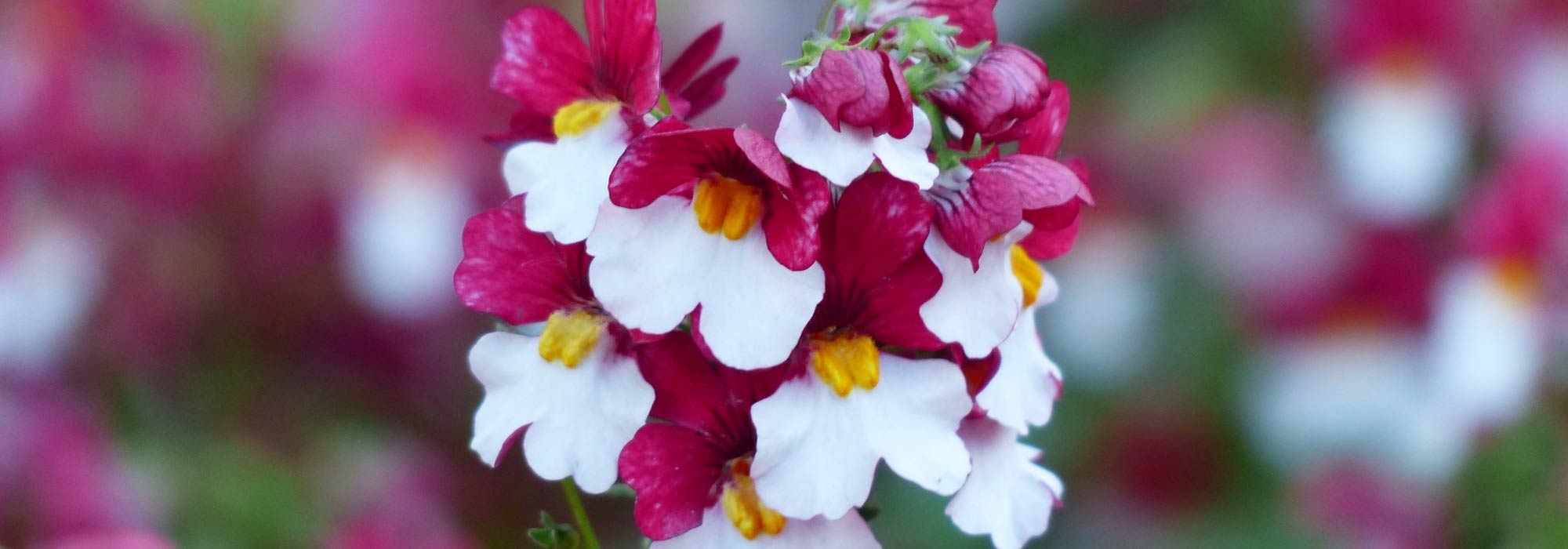
Nemesia: planting, growing and care
Contents
Nemesia in a nutshell
- Nemesia is a must-have for lovers of exotic flowers
- It flowers almost continuously for six months on balconies or in gardens
- Tender, it is usually grown as an annual
- Very easy to grow
- It brings a radiant, fragrant touch to window boxes, pots, hanging baskets, and also to sunny borders and rockeries
A word from our expert
Nemesia, also known as Mirror of the elves, is a remarkable annual plant easy to grow. Ideal summer plant: flowers tirelessly from May until first frosts.
Its delightful small scented flowers with an exotic look bloom in abundance, creating a most spectacular effect in hanging baskets and window boxes.
Nemesia fruticans and Nemesia strumosa are both most often grown as annuals or biennials in our regions because of their low frost tolerance.
There are now a considerable number of hybrid nemesias, such as Nemesia ‘Sunsatia’, more floriferous, ramified and highly weather-resistant. From trailing Nemesia to blue or orange Nemesia, all offer vibrant colours and are simply spectacular in the garden, in borders and sunny rockeries as well as on terrace or balcony.
Discover this small plant appreciated as much for its ease of cultivation as for its radiant, exotic touch.
Description and botany
Botanical data
- Latin name Nemesia
- Family Scrophulariaceae
- Common name Nemesia, Némésie, Mirror of the Elves
- Flowering May to October
- Height 0.15 to 0.30 m
- Exposure sun or partial shade
- Soil type All, well-drained
- Hardiness frost-tender species or -5°C depending on species
Nemesia or Mirror of the Elves is a herbaceous plant, spreading or even trailing depending on variety, of the family Scrophulariaceae, like snapdragon or foxglove. It grows on sandy soils, coastal sites and fallow land of South Africa.
The genus comprises about 50 species, perennial, annual or undershrub. The most common in our gardens are Nemesia fruticans (syn. Nemesia caerulea), a frost-tender perennial best kept for mild climates, and Nemesia strumosa, a frost-tender species: both are most often cultivated as annuals or biennials in our regions because of their low frost tolerance.
Nemesia strumosa has given rise to numerous horticultural varieties such as hybrid series named ‘Sunpeddle’ or ‘Sunsatia Plus’ with bushy growth, more floriferous and a more ramified habit. There are also quite spectacular cultivars with compact forms and vivid, very varied colours like ‘Pink Lemonade’, ‘Danish Flag’ (Danish Flag), red-and-white-flowered, and ‘KLM’, with blue-and-white flowering.
Depending on variety, habit is bushy and erect or spreading to trailing. With rapid growth, these small shrubs form a compact clump with maximum height 15 to 30 cm.
Stems, sometimes downy, thin and well branched from the base, bear a foliage bright green, dark green or grey-green, semi-evergreen or deciduous depending on climate. It is composed of small opposite, elongated leaves 2 to 7 cm long. Entire, lanceolate, they are often very dentate and slightly pubescent.
Nemesia is notable for being floriferous and for its exotically beautiful, sometimes slightly whimsical flowering, which stands out on this dense, graceful vegetation. Nemesia has the particularity of flowering almost continuously, sometimes as early as late winter depending on climate, through to autumn. Nemesia fruticans shows a perpetual flowering that sometimes pauses before resuming even more strongly.
From June to October, often without interruption, the dense foliage is overtaken by a myriad of small symmetrical flowers 1 to 3 cm wide. They arise in the axil of the leaves or are gathered in fairly short, loose terminal clusters on erect stems, creating an airy cloud of infinite delicacy.
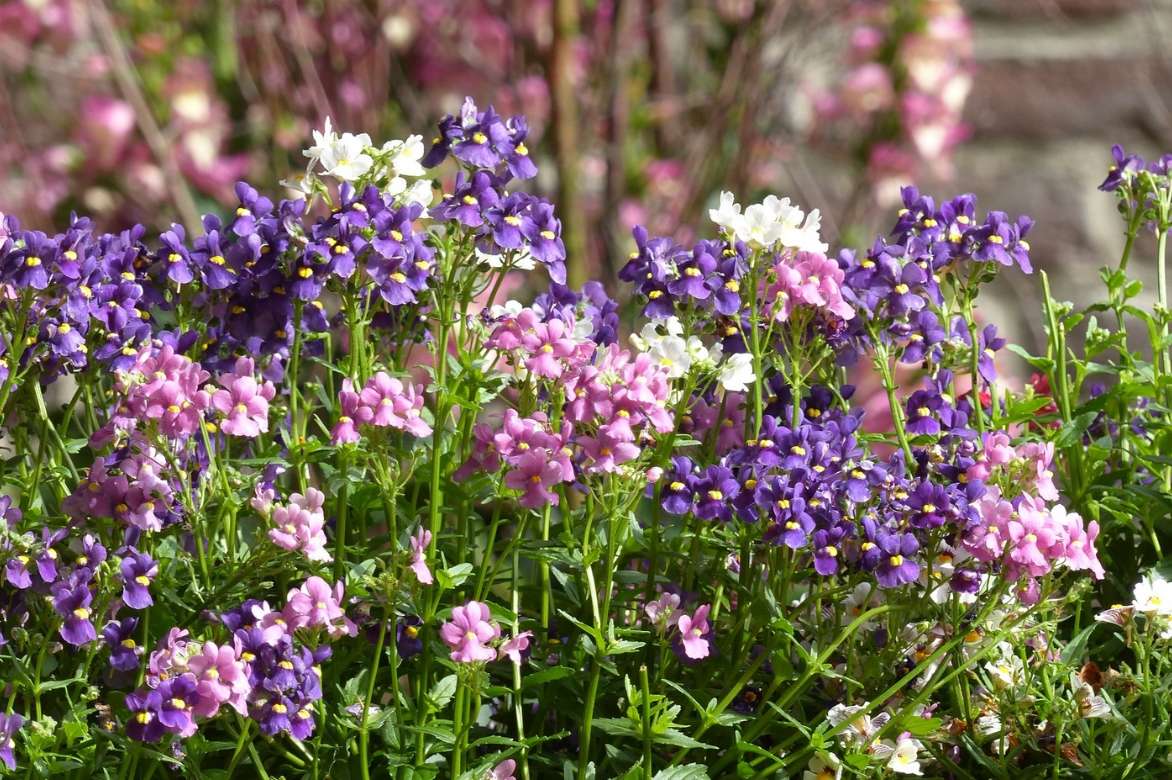
Nemesia flowers are bilabiate; upper lip formed of four petals, lower lip of two swollen fused petals. The whole is centred on a throat of golden yellow or white. A precise pattern that gives the inflorescences the appearance of jewels, reminiscent of the shape of certain orchids or of the violet, hence its nickname ‘Jewel of the Cape’.
The Nemesia cheiranthus ‘Shooting Stars’ is distinguished by flowers with a very exotic look evoking shooting stars with their fringed white crest.
Nemesia flowers come in an endless range of colours, single-coloured or bi-coloured, pastel and velvety very bright blues, whites, pinks, pink-lilac, violets, yellows or, by contrast, rather picturesque reds and oranges, as with Nemesia strumosa ‘Mello Red & White’.
The flowering of some hybrids gives off a delightfully sweet scent of honey and coconut that attracts pollinating insects all summer.
Nemesia is a relatively frost-tender plant; some species withstand short frosts down to about -7 or -8°C and should be planted outdoors in our regions with mild winters. Elsewhere, this plant is commonly grown as an annual.
Nemesia prefers a light, fertile, humus-bearing, very well-drained soil, even calcareous, in sun or possibly partial shade.
It is used in perennial beds, as path edging but proves spectacular for dressing hanging baskets and window boxes.
Nemesia takes its name from Nemesis, the Greek goddess of righteous anger.
Main species and varieties
Most common in our gardens are Nemesia strumosa, which is frost‑tender, and Nemesia fruticans, a tender perennial to be reserved for regions with mild winters. That is why nemesia is most often grown as an annual in our gardens. Today there are interesting series of hybrid nemesias prized for their abundant flowering and good performance. They offer a palette of varied colours, often bicoloured, sometimes bold, even picturesque! All nemesias make a truly striking display in the garden as well as on terraces, in hanging baskets and in containers.
Our favourites
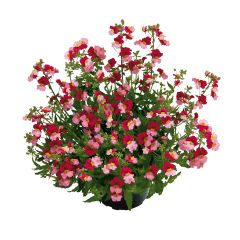
Nemesia strumosa Sunsatia Plus Berry Delight
- Flowering time June to November
- Height at maturity 25 cm
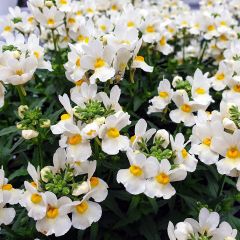
Nemesia Honey White
- Flowering time June to November
- Height at maturity 25 cm
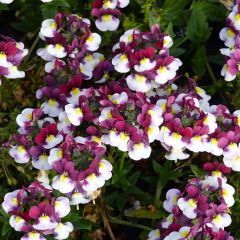
Nemesia Sunpeddle Painted Rose
- Flowering time June to November
- Height at maturity 30 cm
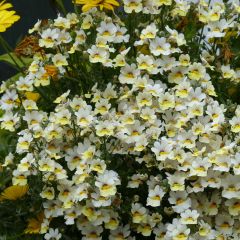
Nemesia strumosa Sunsatia Plus Little Vanilla
- Flowering time June to November
- Height at maturity 30 cm

Nemesia Pink Lemonade
- Flowering time June to November
- Height at maturity 30 cm
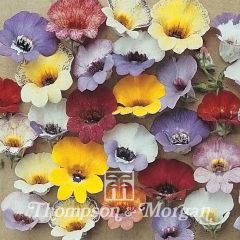
Nemesia strumosa Compacta Tapestry Seed Mix - Cape Jewels
- Flowering time July to November
- Height at maturity 25 cm
Discover other Nemesia
View all →Available in 1 sizes
Available in 0 sizes
Available in 1 sizes
Available in 1 sizes
Available in 2 sizes
Available in 1 sizes
Available in 1 sizes
Available in 1 sizes
Available in 1 sizes
Available in 1 sizes
Planting
Where to plant Nemesia?
If Nemesia is very easy to grow, it is also very frost‑tender and hardly tolerates temperatures below about -3 °C to -8 °C. For this reason, it is most often grown as an annual in our climates. It can be planted in open ground and remain perennial in regions with a mild climate completely free from frost, but elsewhere it is best grown in a pot.
Nemesia is, however, quite resistant to wind and rain as well as summer drought, which is ideal for use in pots and window boxes.
It grows in full sun or light shade in warm regions.
Nemesia needs well‑drained soil, preferably rich, light, even sandy.
Versatile, it flowers on terraces as well as in gardens. In summer it fits into all perennial borders, along paths and, with its habit sometimes trailing, dresses beautifully hanging baskets, window boxes and all types of planters. Its immense groundcover qualities also make it indispensable in sunny rock gardens.
When to plant Nemesia?
In open ground, plant Nemesia in spring, in April–May after last frosts. This plant does not tolerate freezing temperatures: our Nemesias in plug plants should be potted on on receipt and kept under cover for a few weeks before planting outdoors once risk of frost has passed for good.
How to plant Nemesia
In open ground
Allow 4 to 5 Nemesia plants per m2 and keep a planting distance of 25 cm between plants.
- Dig a hole 2 to 3 times the volume of the rootball
- Add a well‑draining layer of clay pebbles or gravel to the base of the hole
- Position the rootball in the centre and backfill the hole
- Water regularly but without excess to ensure establishment
Growing Nemesia in pots
Nemesia is the ideal plant to grow in window boxes, planters or pots! The growing medium must be very free‑draining to avoid stagnant moisture at the roots.
- In a wide, deep pot, spread a good drainage layer of grit or clay pebbles
- Plant into a slightly sandy mix of geranium compost
- Water without waterlogging
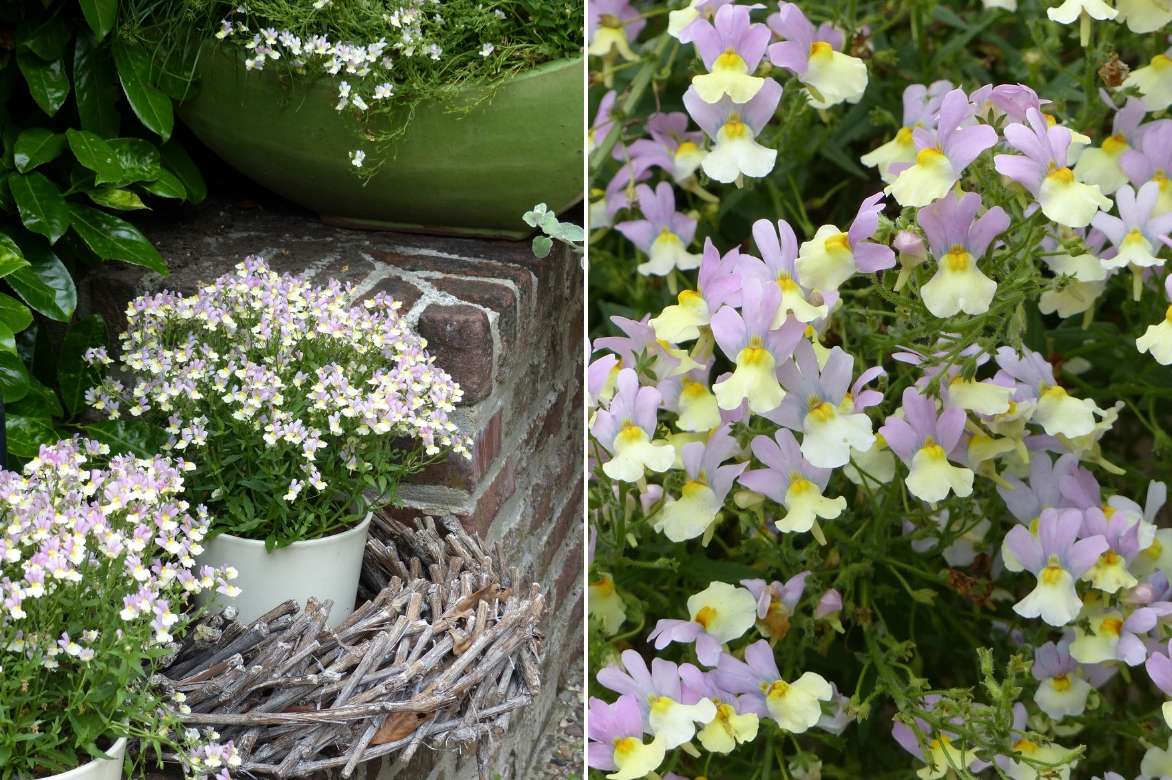
Charming pots of Nemesia ‘Pink Lemonade’
When and how to sow Nemesia?
Nemesia seeds are sown in March under cover to obtain earlier flowering or sown outdoors in May. Warning! Nemesia seeds are so fine they are barely visible to the naked eye.
Under cover
- Sow Nemesia seeds in pots or trays filled with moist potting compost
- Cover seeds with a thin layer of compost and keep seedlings in light and warm conditions at 20–25 °C
- Keep substrate moist but not waterlogged until germination, which takes 7 to 14 days
- Transplant young plants when they have 3 leaves into larger-diameter pots
- Plant out in ground when soil begins to warm in May or move pots outdoors once risk of frost has passed
Outdoors
- In May, broadcast Nemesia seeds or sow in shallow furrows in well-worked, loosened soil
- Cover with a thin layer of compost
- Water regularly until germination
- Thin out to leave only one young plant every 25 cm
Pruning and care
In pots as well as in ground, the Nemesia must be watered regularly but always without excess as it is very sensitive to excess moisture which causes root rot.
Water more regularly during dry periods but never waterlog the substrate.
Before winter, mulch base of perennial nemesias planted in ground.
From late May, to support flowering of plants in pots, apply a “special fertiliser for flowering plants”.
Bring pots into greenhouse or conservatory to protect from frost during winter after pinching back tips of shoots by two-thirds.
Pruning of Nemesia
To prolong flowering, regularly remove faded flowers and spent stems.
Aside from pruning, a light cutting back between flowering periods is recommended to stimulate formation of new flowers.
It tolerates being cut back hard in summer. In July–August, you can cut back the Nemesia to 10–15 cm from base, which will encourage the plant to renew its flowering.
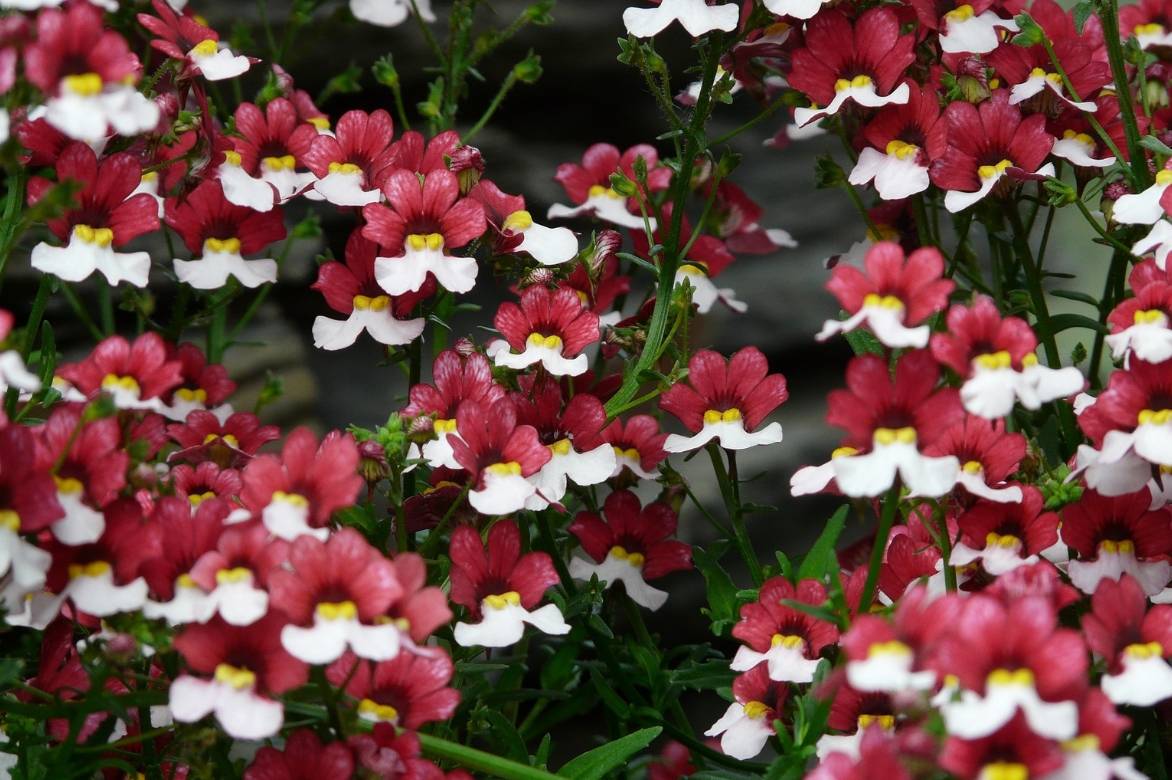
Potential diseases and pests
Nemesia is sometimes prone to powdery mildew. Follow our advice to fight powdery mildew.
Slugs can attack young shoots when they appear: discover how to keep them away.
It can also fall prey to aphids: to eliminate them, spray with black soap.
In very wet weather, thrips, tiny parasitic insects, can cause mottling of foliage. As a preventative measure, in hot, dry weather, regularly spray foliage and spray with garlic decoctions mixed with black soap.
Propagation
Nemesia is easily propagated by herbaceous cuttings in summer.
How to take Nemesia cuttings
- From the tips, take stems about 8 cm to 10 cm long
- Remove lower leaves and any flower buds
- Insert these cuttings up to the first leaf into pots containing a light, free-draining mix of sand and potting compost
- Place in warmth and light, keeping compost moist
- When 2 or 3 new leaves have formed, plant out in the garden or in a planter
Companion plants for nemesias
Nemesia’s flowering is precious for quickly bringing spots of light or adding an exotic touch to gardens and sunny terraces. Rich palette of colours of its flowers allows single-flower displays in gentle associations or bolder ones. It is indispensable in a pink garden or to create an exotic-inspired border.
In a fresh, colourful planter, pair nemesias with diascias, geraniums, lobelias, verbenas or petunias.
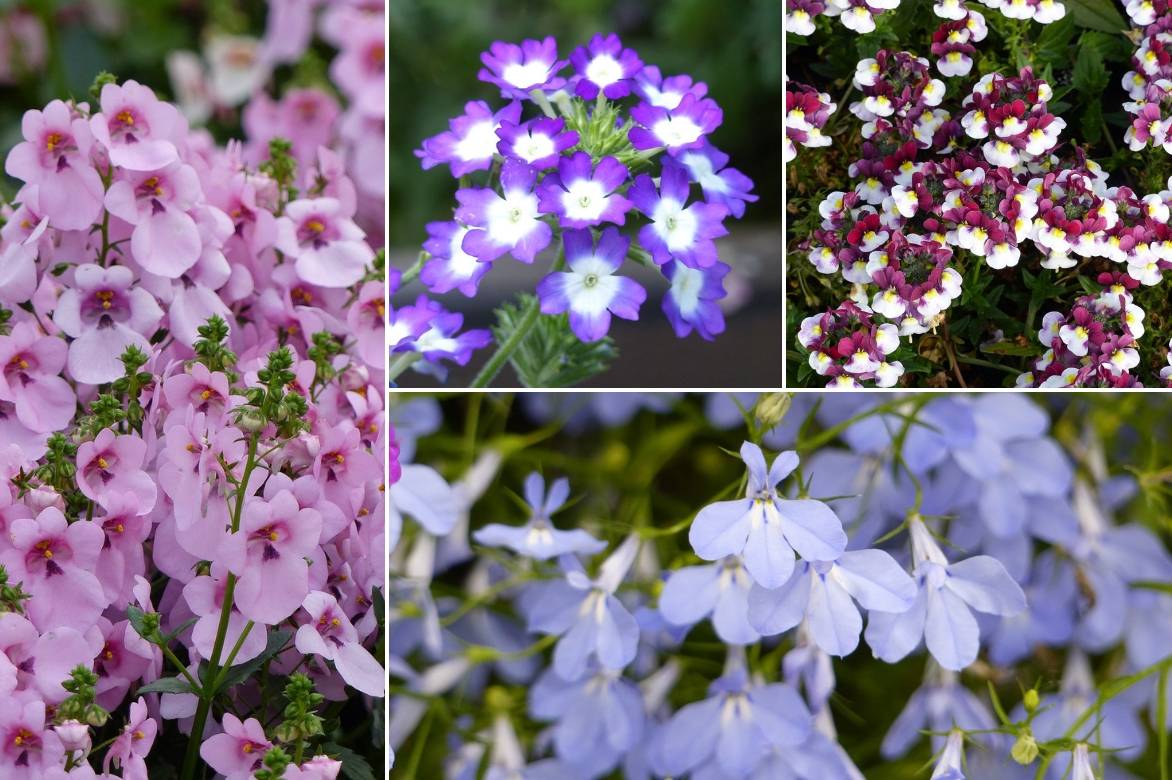
Pairing idea: Diascia ‘Breezee Plus Pastel’, Verbena ‘Lilac Eye’, Nemesia ‘Sunpeddle Painted Rose’ and Lobelia ‘Hot Water Blue’
In foreground of a bed of radiant annuals, it pairs easily with ficoids, cosmos, love-in-a-mist, flax and California poppies.
Varieties with soft hues cannot compete with bright, garish colours but look attractive alongside plants with silver, velvety foliage such as stachys.
Among summer-flowering perennials, to add height to a bed, pair it with finer, ramified plants such as Verbena hastata, Verbena bonariensis, and garden valerian or with bulbous plants such as ornamental alliums.
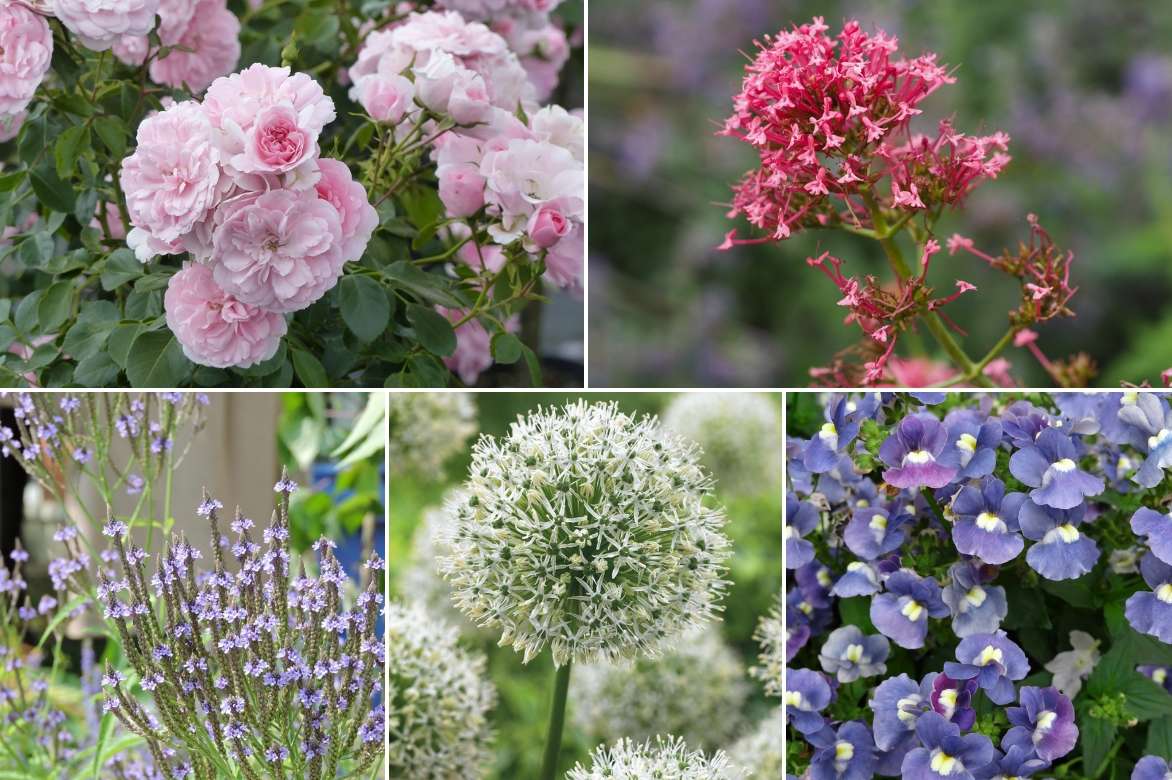
Another pairing idea: Rosa ‘Bonica’, Centranthus ruber, Verbena hastata, Allium ‘Mount Everest’ (photo Patrick Standish) and Nemesia ‘Sunpeddle Blue Rose’ (photo PAP)
Its delicate flowers provide a flattering foreground for plants with more compact inflorescences such as sedums or achilleas.
At path edges or in rock gardens, it will add a sophisticated note alongside dwarf roses, gypsophilas, Dorotheanthe difformis.
It will look stunning to conceal base of a climbing with exotic looks such as bignonia, or simply clematis.
Useful resources
- We’re home to the finest collection of Nemesia plug plants!
- Get inspired to flower your terraces and balconies!
- On our blog, discover our most beautiful annuals and biennials!
- Discover our 7 ideas for plant combinations to create beautiful summer planters
- Subscribe!
- Contents
. Happy gardening! Nemesia: Everything You Need to Know
Nemesia is a charming and colourful addition to any garden, offering a delightful display of flowers that can brighten up both borders and containers. This guide will provide you with all the essential information to grow and care for Nemesia effectively.
### Planting Nemesia
Nemesia thrives in well-drained soil and prefers a sunny to partially shaded location. When planting, ensure the soil is enriched with organic matter to support healthy growth. Space the plants about 20-30 cm apart to allow for ample air circulation and growth.
### Care and Maintenance
Watering is crucial, especially during dry spells. However, be careful not to overwater, as Nemesia does not like soggy conditions. Regular deadheading will encourage more blooms and extend the flowering period. During the growing season, a balanced, slow-release fertilizer can promote lush foliage and vibrant flowers.
### Common Varieties
There are numerous varieties of Nemesia, each offering different colours and patterns. Some popular choices include:
- **Nemesia strumosa**: Known for its vibrant array of colours.
- **Nemesia fruticans**: Features larger flowers and a slightly taller growth habit.
### Pests and Diseases
Nemesia is relatively hardy but can be susceptible to common pests like aphids and whiteflies. Regular inspection and prompt treatment can prevent significant damage. Fungal diseases such as powdery mildew can occur in humid conditions, so ensure good air circulation around the plants.
### Conclusion
Nemesia is an excellent choice for gardeners looking to add a splash of colour with minimal maintenance. By following these simple care instructions, you can enjoy the beautiful blooms of Nemesia throughout the growing season. Whether in hanging baskets, containers, or flower beds, Nemesia is sure to bring joy and vibrancy to your garden space.](https://en.promessedefleurs.eu/blogwp/wp-content/uploads/2018/12/nemesia-tout-savoir.jpg)































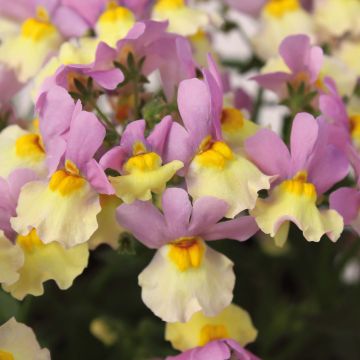
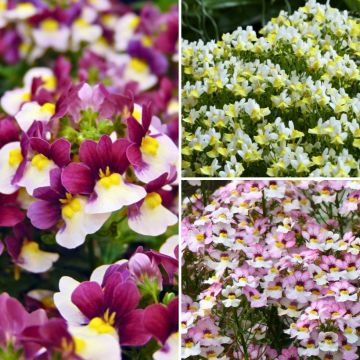
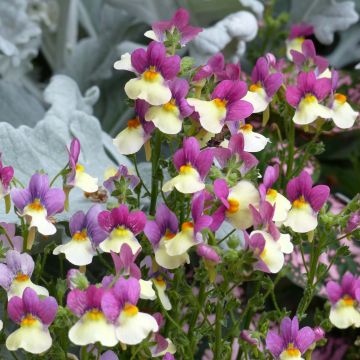


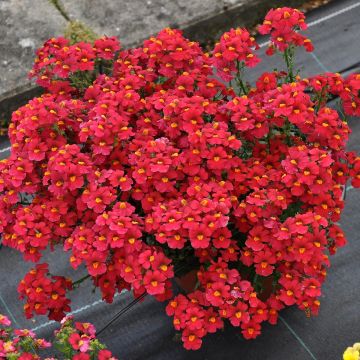
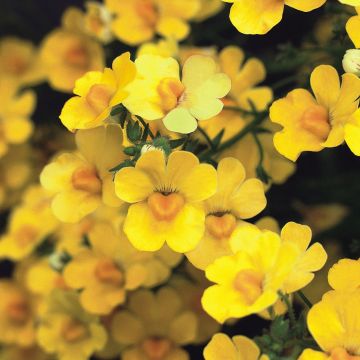
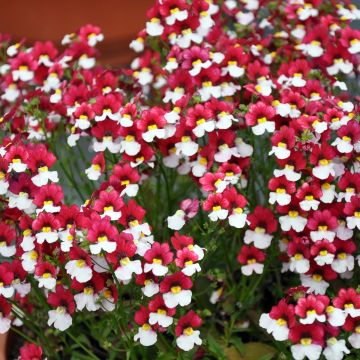
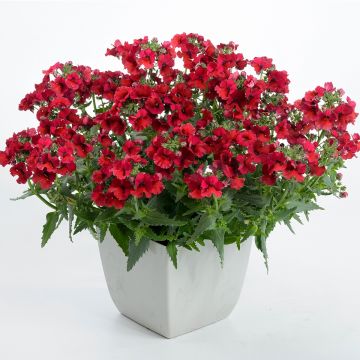
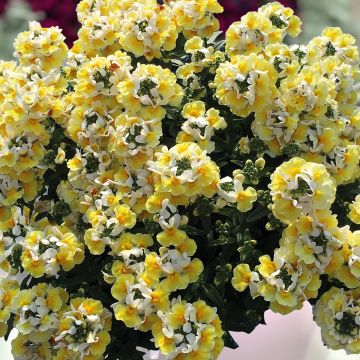
Comments